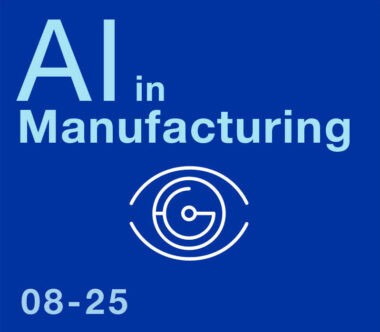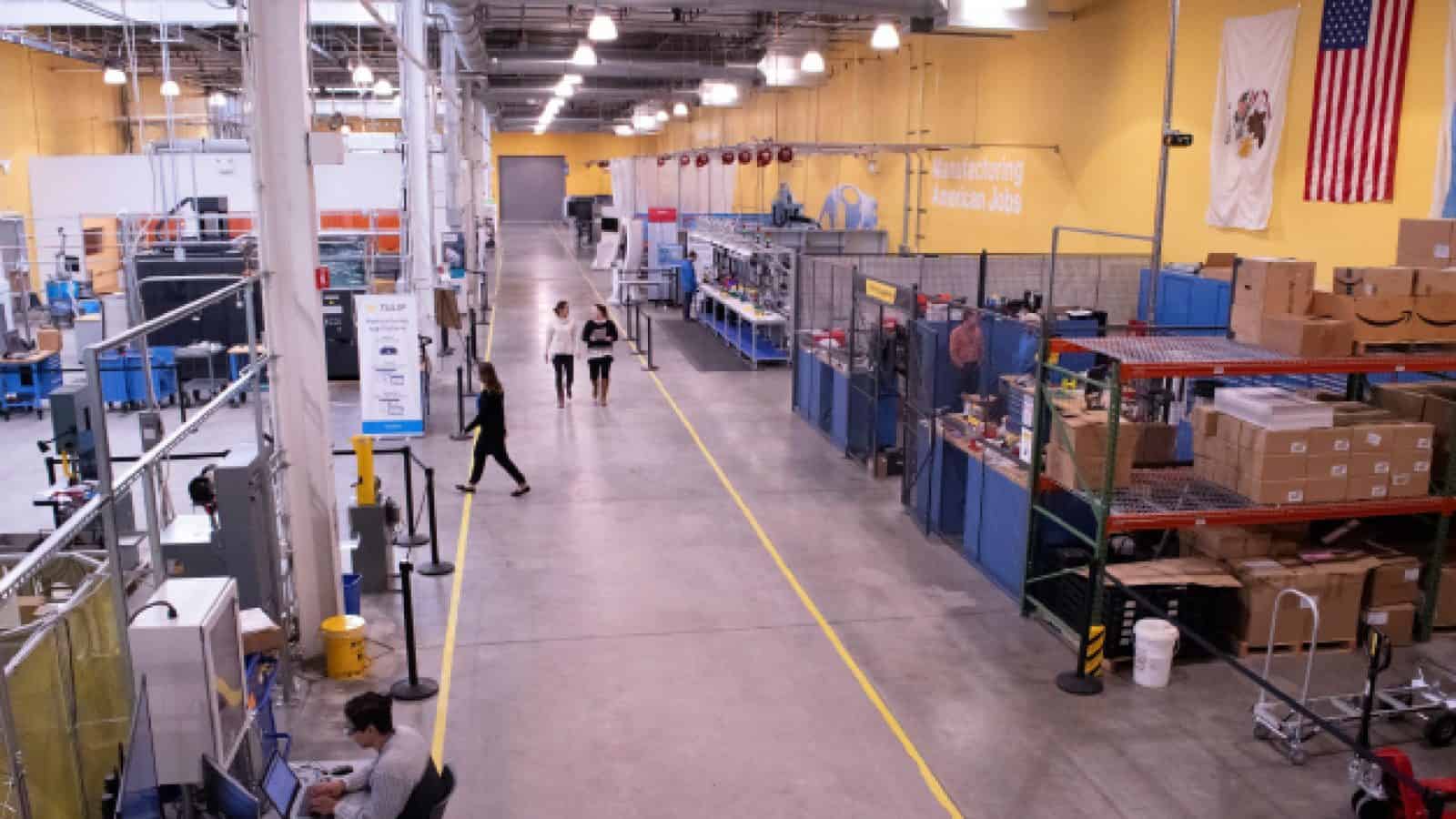Defining the Human-Machine Relationship

In his Rethink speech in June, MLC’s founder said manufacturers should take a proactive approach to decide what increasingly intelligent, AI-powered machines should and shouldn’t do.

TAKEAWAYS:
● AI-powered machines are now outperforming humans in seven important technical benchmarks..
● A new human-machine “hybrid model” is emerging that will equate synthetic intelligence with biological intelligence.
● Manufacturers should appoint an executive to study and define the human-machine relationship in their organizations.
In 1950, the great British mathematician Alan Turing authored a paper called “Computing Machinery and Intelligence” in the academic journal Mind, published by Oxford University Press. In the first sentence of that paper he asked a question that has been the subject of passionate discussion and debate, intense research, and endless fascination for 75 years:
Can machines think?
In something of an answer to his own question Turing said: “We may hope that machines will eventually compete with men in all purely intellectual fields.”
Today, as a result of advances in artificial intelligence, computing, communications networks, and the availability of ever-larger data sets with which machines can process information, Turing’s question has been superseded by many other questions, some existential, that we must ask in the Age of AI.
To what extent should we allow intelligent machines to act? What types of decisions should they be empowered to make? Should they be trusted? Can they be co-equal partners with human beings? How shall we define the status of AI-powered intelligence machines in relation to human beings?
How the human-machine relationship is defined will profoundly influence business, government, and society.
The answers to these and other related questions will not only have implications for manufacturing, but will also profoundly influence politics and government policy, military strategy, the nature and future of work, and many dimensions of everyday life.
As Henry Kissinger, Craig Mundie and Eric Schmidt say in their 2024 book “Genesis: Artificial Intelligence, Hope and the Human Spirit”: “New forms of AI and human responses to them could transform nothing less than the human relationship to reality and to truth, the exploration of knowledge as well as the physical evolution of humanity, the conduct of diplomacy, and the international system. These are among the crucial issues of the coming decades, and they ought to be the guiding concerns of leaders in every arena.”
And so today I pose to you a key question of our time: What does it mean to be human in the Age of AI?
The Relationship is Dramatically Changing
No doubt prior generations had to understand their relationships to tools and machines as the devices evolved over the centuries. But much of this had to do with physical relationships – with a hammer, a saw, an axe, a loom, a steam engine, an electrically-powered moving assembly line, a press, an injection molding machine, etc.
Being human was always more defined by attributes such as creativity, critical thinking, contextual awareness, judgement, curiosity, and, of course, having a soul and a connection to the divine.
Some researchers have delineated the evolution of the human-machine relationship across what is called the 5C model – co-existence, cooperation, collaboration, and, in the future, compassion, and co-evolution.
In our own time, the human-machine relationship has been traditionally designed as a master-servant relationship, where the human directly controls what the machine will do and when it will do it through an interface.
Machines will reach a level of intelligence that enables them to execute tasks and make decisions autonomously.
But AI is changing this design, and in dramatic ways. In coming years, our notions of intelligence will be reshaped by what EY Global Vice Chair Hanne Jesca Bax calls “the next generation of disruptive technologies” – AI, and in particular, GenAI; quantum computing, which will increase the speed and scale of AI by orders of magnitude; the metaverse, by providing different human-machine interfaces; and brain-machine interfaces themselves, which will connect our biological and silicon brains.
In short, we are in the midst of moving from a time of automation, where the human still directs the machine, to where machines will reach a level of intelligence that enables the machine to execute tasks autonomously, without pre-defined instructions.
As a paper published last year by researchers from the University of Bonn and Aachen University in Germany said: “The previously accepted understanding that autonomy is only applicable to humans has been invalidated.”
AI is Already Outperforming Humans
So, what is the tale of the tape, so to speak, between humans and machines?
In its 2025 AI Index Report, Stanford University’s Human-Centered Artificial Intelligence unit said that AI-powered systems have now out-performed humans on seven of eight technical performance benchmarks. These benchmarks include: image classification; medium-level reading comprehension; multi-task language understanding; PhD-level science questions; visual reasoning; English language understanding; and competition-level mathematics. Only in multi-modal understanding and reasoning did humans do better than AI.
But Stanford said that the velocity of AI development cannot be underestimated. “The performance gap between AI and humans is shrinking rapidly,” the Stanford report said. “For example, on competition-level mathematics, state-of-the-art AI systems are now 7.9 percentage points ahead of human performance, a significant improvement from the 0.3-point gap in 2024.”
While human intelligence has been augmented by technology for many years – think spreadsheets, BI tools, search engines, GPS – it is now being re-shaped in such a fundamental way that a new model is emerging, which EY’s Bax calls a “human-machine hybrid.” In this model, synthetic intelligence shares an equal plain with biological intelligence. “AI will commoditize the application of knowledge,” she says.
This development has led some in our industry to posit that a new industrial revolution needs to take place. The Fifth Industrial Revolution, correcting what is claimed was the insufficiency of human aspects in the Fourth IR, is described by its proponents as a human-centered revolution.
“Industry 4.0 is dedicated to the realization of mass customization ideas,” said researchers from Lublin University of Technology in Poland, in a 2023 report. “Industry 5.0 redefines the man-machine relationship by restoring the human aspect to production. The collaborative relationship dominates, with the issue of compassion and coevolution still an issue of the future. “
But the general idea of a Fifth Industrial Revolution, should one be warranted, has hardly gathered consensus. In 2022, the European Commission said the threat of climate change should be the focus of a fifth IR.
Manufacturers should be aware of the many challenges arising from the human-machine relationship.
This didn’t go over well in Germany, the birthplace of Industrie 4.0. Last year at Hannover Fair, Acatech, the National Academy of Science and Engineering in Germany, issued a statement strongly criticizing what it called “the frivolous positioning of the unnecessary term Industry 5.0
“… the new term Industry 5.0 is not needed,” Acatech said, “…because ‘human-centricity’ and societal benefits have been the most important goals of Industrie 4.0 from the outset. … it falsely suggests that the fourth industrial revolution is complete and that our attention can be turned to new topics.”
For its part, MLC has had a core focus on the human aspects of what we call Manufacturing 4.0, particularly the leadership dimension, since we introduced the concept of Progressive Manufacturing in 2004. Our vision of the next great leap forward is what I termed last year as The Reinvention Revolution.
This fifth IR will center around building on the accomplishments of M4.0 to reimagine business models, achieve full enterprise-wide cross-functional integration in our companies, data sharing, and connected communities.
A high degree of automation and autonomy will become standard as AI is infused in nearly every functional area and system. And the industry will learn to work outside its silos.
Rapid innovation, fast time-to-market, great flexibility, acute visibility into operations and supply chains, and the ability to personalize products will be hallmarks of performance. Taken together, these and other elements, successfully executed, will characterize leading mid-twentieth century manufacturing companies and how they are an active part of a connected mid-century industry.
Manufacturing Leaders Must Step Up
But it must be said that if we have underestimated anything it is the rapid rise and development of AI. At our Future of Manufacturing conference in December of last year, I discussed with you the worldwide competition for AI supremacy. In our 2022 White Paper, “The Next Phase of Digital Evolution,” MLC pointedly called out the importance for the industry to define the human-machine relationship as machines become increasingly intelligent. And in my Rethink talk last year, one of the Decision Points I offered was that we must be “very deliberate” about how we define that relationship.
So I think I have made the case this morning that defining the human-machine relationship is not an abstract academic exercise. There are real-world effects now of how we will make decisions, how and what kinds of work will be performed, how we will organize our companies, and how we will relate to intelligence machines and vice versa.
It is incumbent upon us as manufacturing leaders to define where the lines are of what is permissible and desirable and where the guard rails should be even as the technology matures and becomes more powerful and capable. We cannot take the position that things will just work themselves out. We are not dealing in just the familiar physical world anymore.
We are dealing with what the political analyst and commentator Ian Bremmer of the Eurasian Group calls: “humanity’s first encounter with a superior intelligence.”
Five Recommendations
So what are some of the things we can do now?
The short answer is there is much we can do now, thanks to a lot of thought a number of organizations, including MLC members, have put into the human-machine relationship.
Here is what I would call some consensus guidance:
- First, approach the subject of the human-machine relationship deliberately and proactively. Appoint someone in your organization to study the relationship as it exists today and how it may develop in the next five years or so and come back with recommendations.
- Second, figure out who in the organization should lead the management of the relationship going forward. In a recent Deloitte State of AI research report, 43% of respondents indicated that their organizations have already appointed a leader responsible for helping humans collaborate better with intelligent machines – and it’s not currently the Chief HR Officer. But Deloitte recommends redefining the CHRO’s function to that of Chief Human and Machine Resource Officer. In what it calls “anthropomorphizing AI”, Deloitte suggests treating AI as a kind of digital worker, in which it is considered a talent source when hiring. Deloitte authors Sue Cantrell, Brad Kreit and Tom Davenport even go further, saying that AIs could be given a performance review, set of KPIs, a place in the org chart, and even – believe it or not — a retirement plan! (Where do I sign up?)
- Third, assuming that many will adopt what I mentioned earlier as the “hybrid model” in which people and machines work increasingly close together, redesign your factory floor work environments around three things — people, who will need to be upskilled; increasingly more powerful machines; and growing volumes of well-analyzed data. Trust and inclusivity are key goals of any redesign. And a key design principle is what LinkedIn founder Reid Hoffman calls for in his book Super Agency. “When AI becomes a co-pilot rather than a competitor,” he says, “it becomes amplification technology.”
- Fourth, decide what types of decisions you are comfortable having an AI make in a production or supply chain environment. This is obviously a moving target as technology develops. And it will challenge our long-held rule of always having a human in the loop.
- Fifth, be aware of the many challenges that will result from the relationship. There is always a downside to technology. The redesigns I mentioned could result in greater organizational complexity and more complex work for people. The more people interact with an AI, the more there may be a potential for greater reliance on it. Pervasive use of AI could also result in human isolation and even laziness. Could we become too dependent on AI?
Remembering the Eternal Truths
So, I’ll pose the question one last time. What does it mean to be human in the Age of AI?
Let’s put aside the tech-speak and managerial-speak for a moment.
Frankly, we’ve always known, since antiquity, what it means to be human. The eternal truths never change.
Plato felt that man should focus on eternal forms that are timeless. Eternal things do not change in time, Plato believed.
As we allow ourselves to be dazzled by technological possibilities and new ways of working and interacting with people and intelligent machines, let us also renew our embrace of those things that Plato long ago identified as eternal – honesty, truth, loyalty, love, spirit, faith, and, if I may add one of my own, the dignity and non-negotiable worth of the individual human being.
These timeless things keep us grounded and will provide the unyielding foundation to enable us to travel, together, to a better future in the Age of AI, one in which men and women everywhere will walk tall in the bright sunshine of dignity and freedom. M
About the author:

David R. Brousell is the Founder, Vice President and Executive Director, Manufacturing Leadership Council
